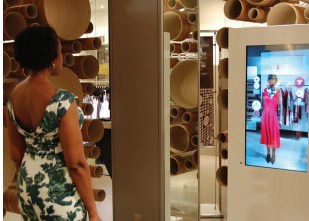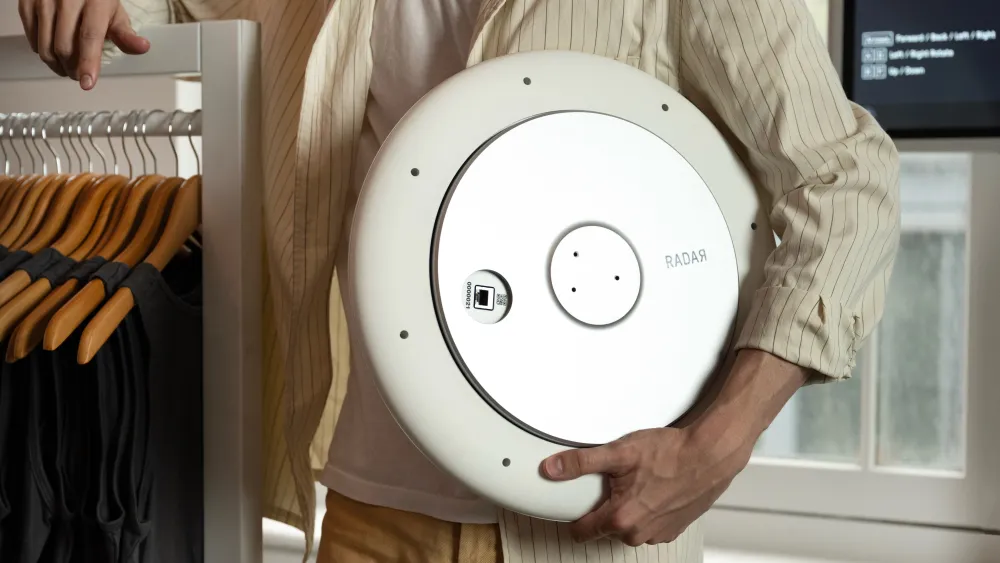In 2011, Cisco IBSG, together with its partners C-instore, Aitech, and The Team, developed the customer experience and prototype for the virtual fashion mirror, which consisted of a life-sized mirror that overlays the customer’s image with pictures of clothing selected using a gesture-based interface. It enabled shoppers to quickly create outfits by mixing and matching a wide range of garments uploaded into the mirror.
The mirror also added value by providing customers with expert recommendations for garments that complemented the one they had selected; by allowing customers to take pictures of themselves trying on garments virtually; and by creating a list of their selected garments. Their lists and pictures could then be printed, sent to them via email, or shared via social media. The virtual fashion mirror experience was designed to enable customers to easily browse and quickly mix and match a wide range of garments—without having to walk the shop floor.
The mirror gave customers a good idea of how they looked wearing different garments, after which they could either go ahead and buy the garment or try on an edited selection. Because it offered a fun, inspirational, and convenient experience that helped people explore and choose styles, the virtual fashion mirror concept was named Cisco StyleMe. Once the experience and prototype were developed, Cisco IBSG and John Lewis ran customer testing with a range of existing John Lewis customers. The testing clearly demonstrated that customers enjoyed and saw value in the virtual mirror experience. Two consumer groups were especially enthusiastic about the virtual shopping experience—women over 50 years of age and younger women in their 20s. During testing, it became clear that the benefits of easily trying on new outfits and getting expert advice far outweighed any apprehension the older group had about the technology. For younger women, tests showed that Cisco StyleMe made the shopping experience both fun and social.
The consumer testing results gave John Lewis the supporting data and confidence that they should proceed to a live store pilot. In John Lewis’ Oxford Street shop, the StyleMe pilot was set up to run over six weeks during May and June 2012. The objective was to simulate the in-store experience of the ladies’ wear fashion floor by offering an assortment of 10 brands, including three of John Lewis’ own labels. Approximately 20 percent of the garments were previously available only online, including the entire collection from one of the external fashion brands.
The pilot was managed via five streams of work: • Range selection and image management • In-store layout, design, and signage • End-to-end customer and Partner experience design • Partner communication, engagement, and support • Running the pilot operation The success of the pilot was assessed against: • Creating footfall and dwell in the fashion area • Customer engagement, response, and feedback • Usage: number of customers, garments viewed, and garments tried on virtually • Creating additional sales and awareness of JL.com • John Lewis Partner and management feedback



